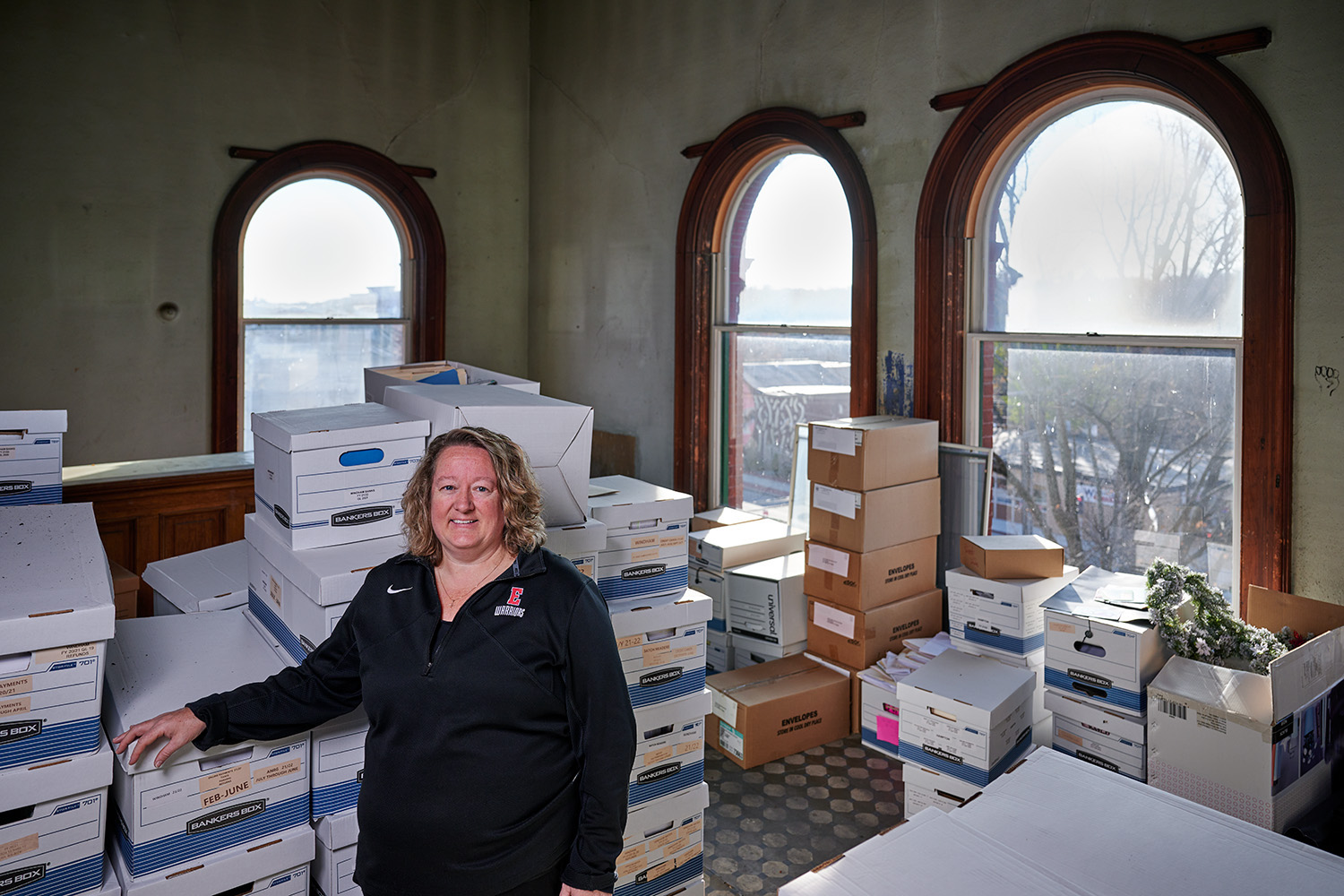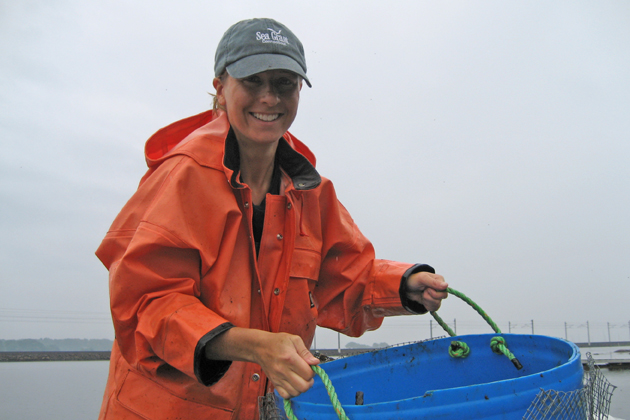
Commercial shellfish farmers who use the ocean to grow their crops off the nation’s coastline now have the same kind of protection against crop losses as do people who farm on land, due to a recent change in federal policy.
The new language providing coverage was added to the Noninsured Crop Disaster Assistance Program (NAP) as part of a recent Farm Bill and is a big deal for Connecticut’s $30 million aquaculture industry.
“We were thrilled to learn that after years of discussion with the United States Department of Agriculture (USDA), crops that have traditionally not been eligible for federal crop insurance have now been granted coverage under the NAP program,” said Tessa Getchis, a UConn aquaculture extension educator, who was instrumental in the policy change. “That’s a huge step forward for the aquaculture industry now that the program will cover losses due to named tropical storms and hurricanes.”
The program provides financial assistance to producers of what are normally considered non-insurable crops to protect against natural disasters resulting in crop losses or the prevention of crop planting. Before the new language, the law stated that commercial shellfish crops could be insured only if they were grown in containers or bags, but that’s not how it’s done in Long Island Sound.
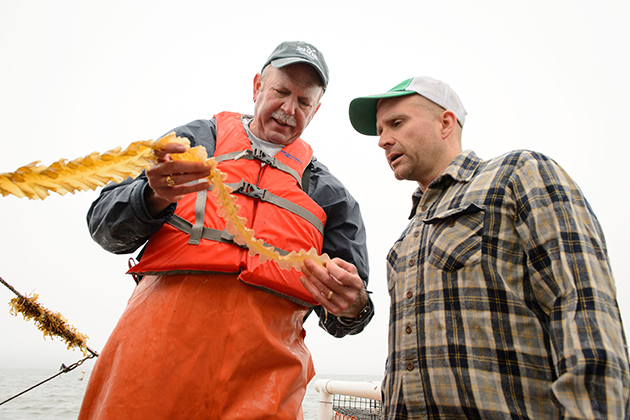
Instead, the majority of local farmers seed their clams and oysters directly on the ocean floor, and conduct their transplanting and harvest by dredging. Seaweed farmers grow their crops on ropes, not in containers. Today, the cultivation of clams, oysters, and kelp provides more than 300 local maritime jobs.
During a press conference held at UConn’s Avery Point campus on Dec. 30 to announce the expansion of the program to include Connecticut’s aquaculture crops, Connecticut Sea Grant director Sylvain DeGuise thanked the state’s congressional delegation for their support and staff in the Department of Extension and Sea Grant – Getchis in particular – for their long-term efforts to achieve this goal.
“Tessa proved to be a gentle pit bull,” he said. “She bit hard [on this issue] and wouldn’t let go until the right thing had been done for commercial shellfish farmers.”
Sea Grant provides science-based information to individuals and organizations that can benefit from programs that support the nation’s marine resources, just as Land Grant programs support land-based agriculture.
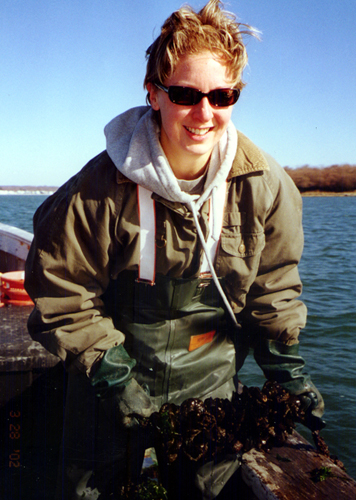
In his remarks, U.S. Sen. Richard Blumenthal praised the cooperative efforts of Sea Grant, federal and state government officials, and various industry sources for their perseverance in getting coverage for non-traditional crops included in NAP.
“Weather disasters have become the ‘new normal,’ whether they are hurricanes or tropical storms or Nor’easters,” Blumenthal said. “The farmers who use the Sound to grow their crops deserve the same kind of protection against crop losses as do people who farm on land. Shellfish farmers are no less courageous and entrepreneurial than farmers who till the soil.”
Blumenthal noted that there is still work to do to expand the coverage, but said NAP is “a step in the right direction.” Nor’easters, which can damage shellfish beds, are another peril the industry hopes to eventually have covered.
Connecticut has a long history of shellfish farming. Town records of early colonists in Groton mention experimentation with cultivation of oysters; and artificial beds in the Sound date from the 1820s. By the late 19th century, oyster cultivation had developed into a major industry.
Robert Rheault, executive director of the East Coast Shellfish Growers Association, which represents shellfish farmers from Maine to Florida, said he appreciates the decade-long effort it took to get insurance protection.
“Shellfish farming is inherently a very risky business. Like land farmers, we suffer losses from predators, diseases, theft, and storms,” Rheault said. “While NAP insurance only covers a portion of weather-related crop loss, it could mean the difference between a farm’s bankruptcy and survival after a hurricane has wiped out someone’s crop.”
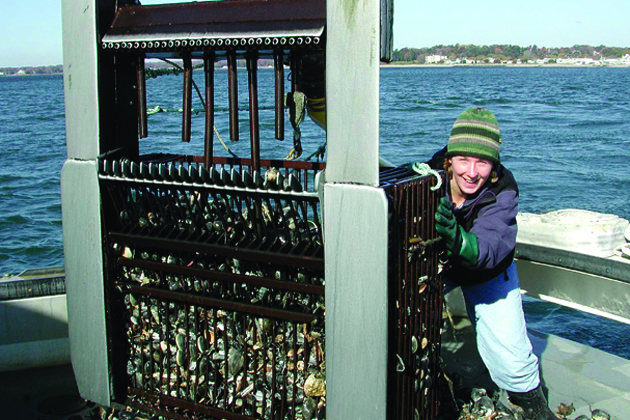
Getchis, who has a bachelor’s degree in marine biology and a master’s in fisheries, animal, and veterinary science, joined UConn’s Department of Extension/Sea Grant program 15 years ago as an extension specialist.
“I sometimes think that we [here in Connecticut] overlook our locally produced shellfish,” she said, “while, to oyster enthusiasts, Connecticut’s product is world renowned. We have an aquaculture industry to be proud of, and the role of Sea Grant is to help our constituents keep important issues like crop insurance in front of local, state, and federal lawmakers.
“[Crop protection has] been a long time coming,” she added, “but the effort has definitely been worth it.”
Watch a UConn video about kelp farming.



